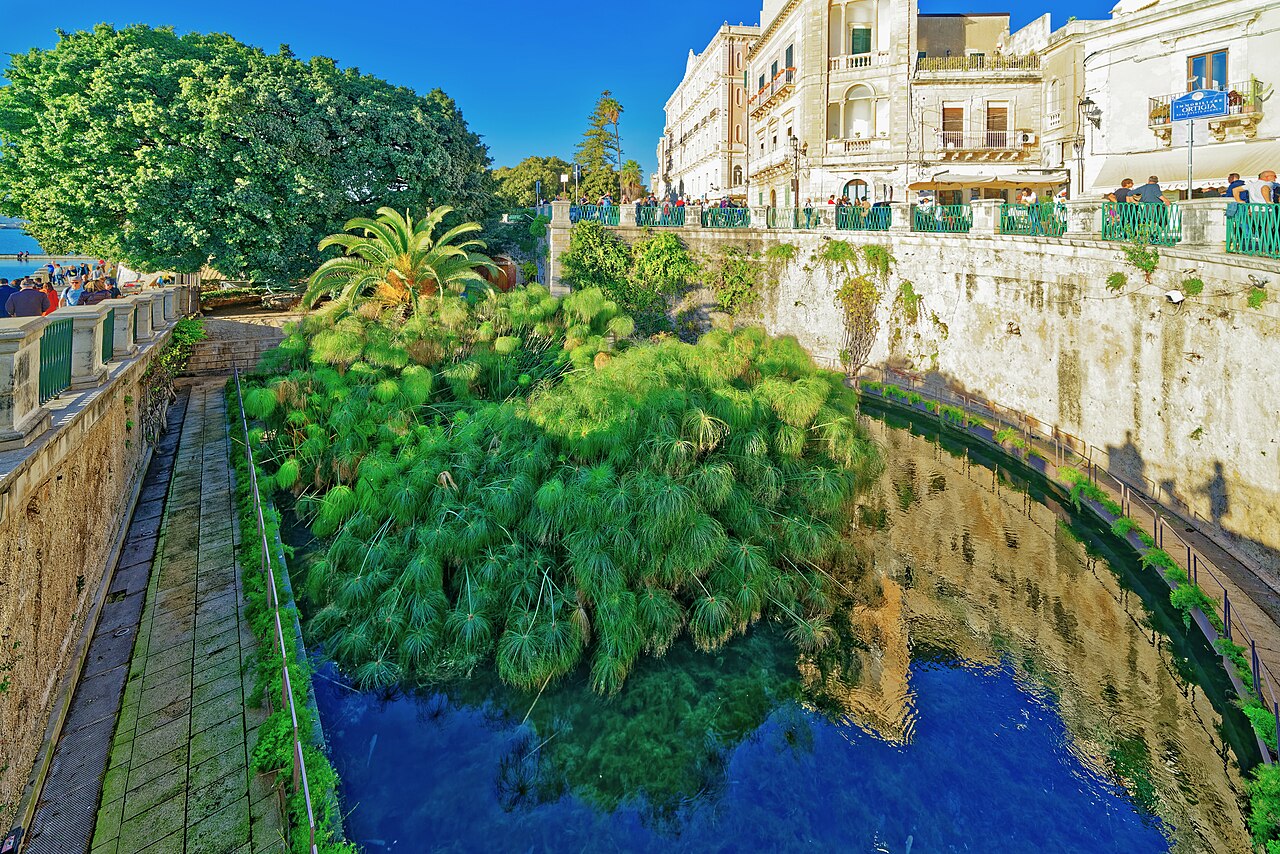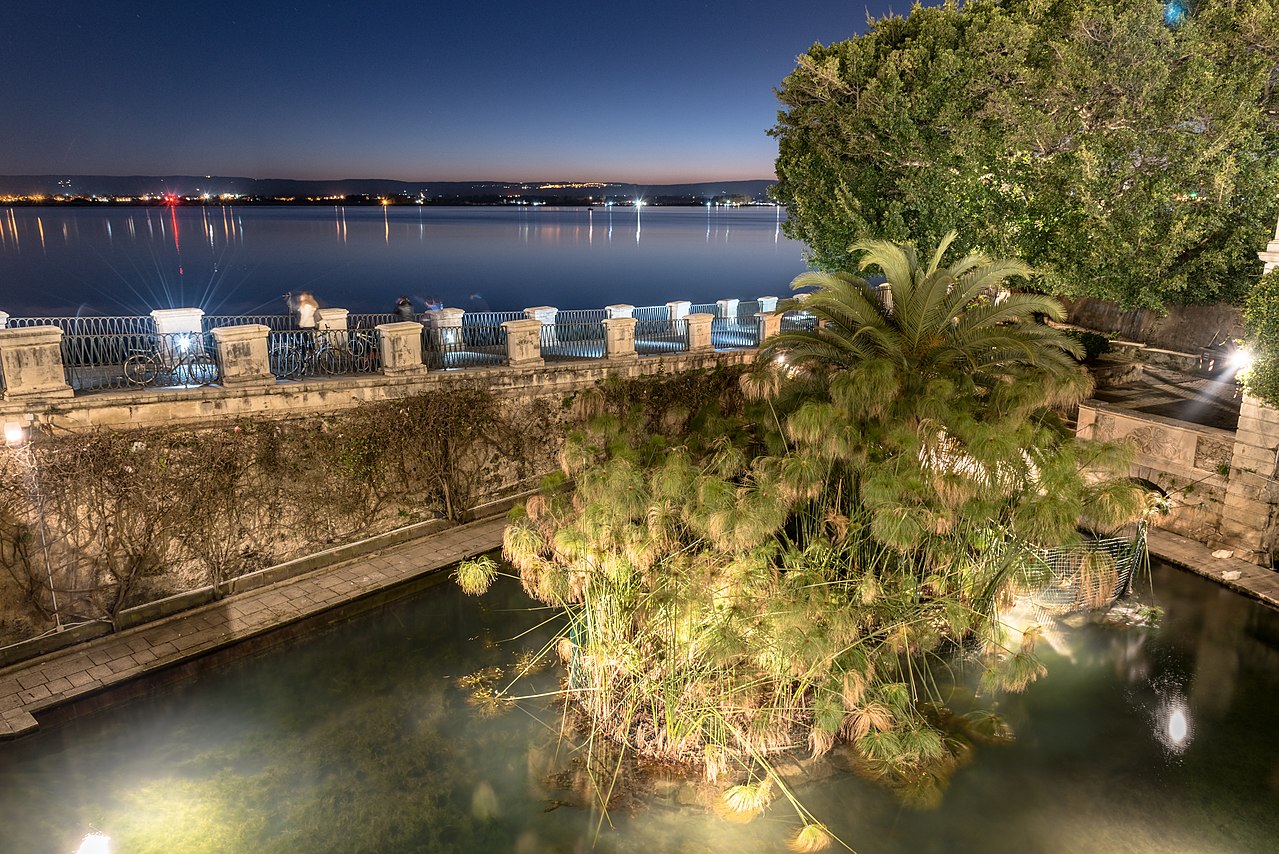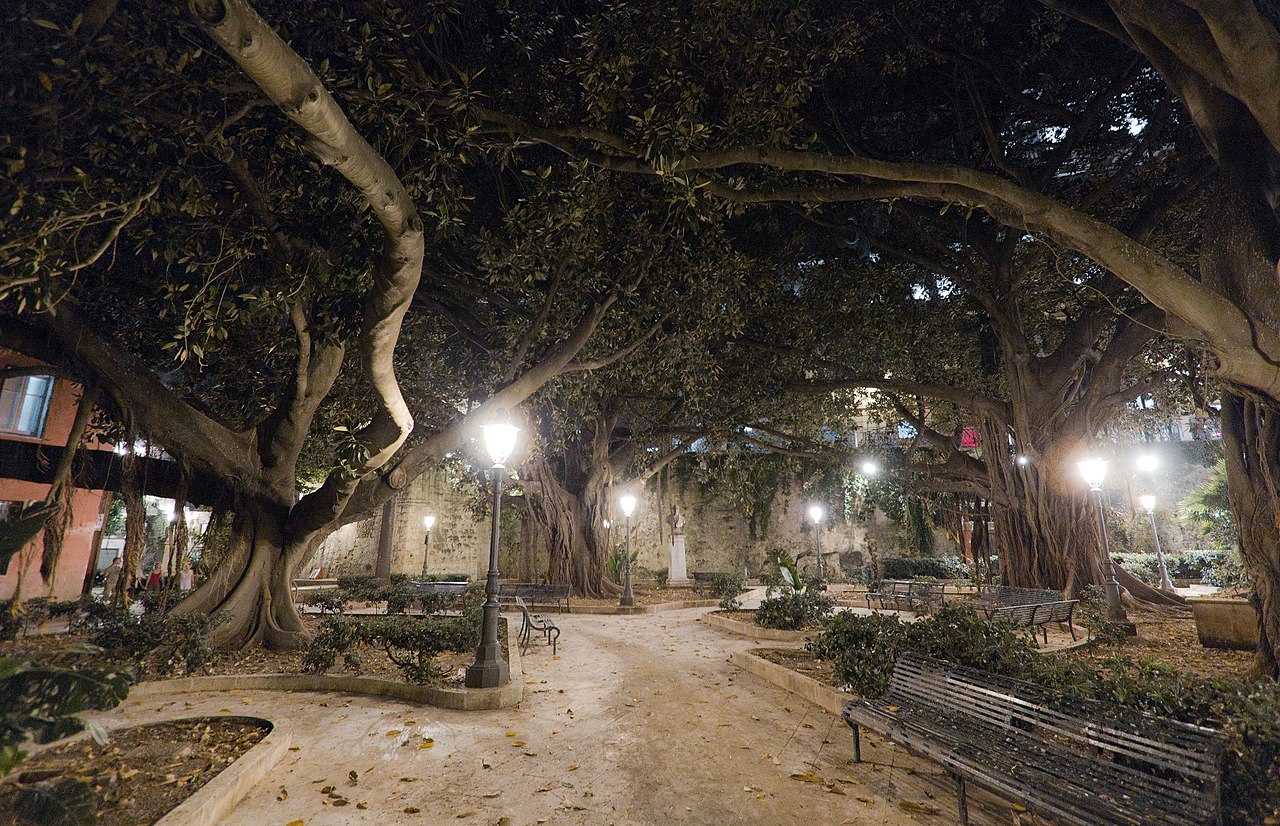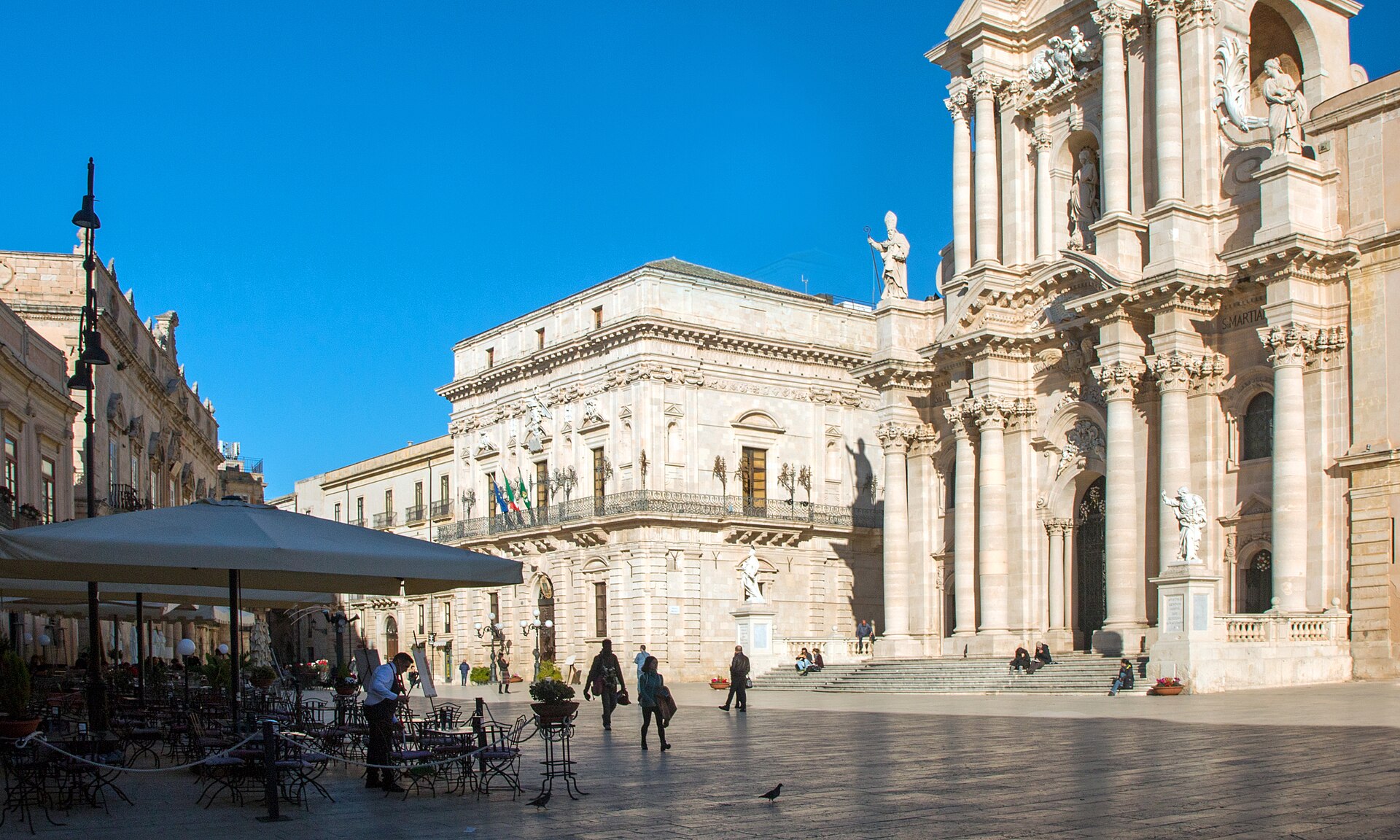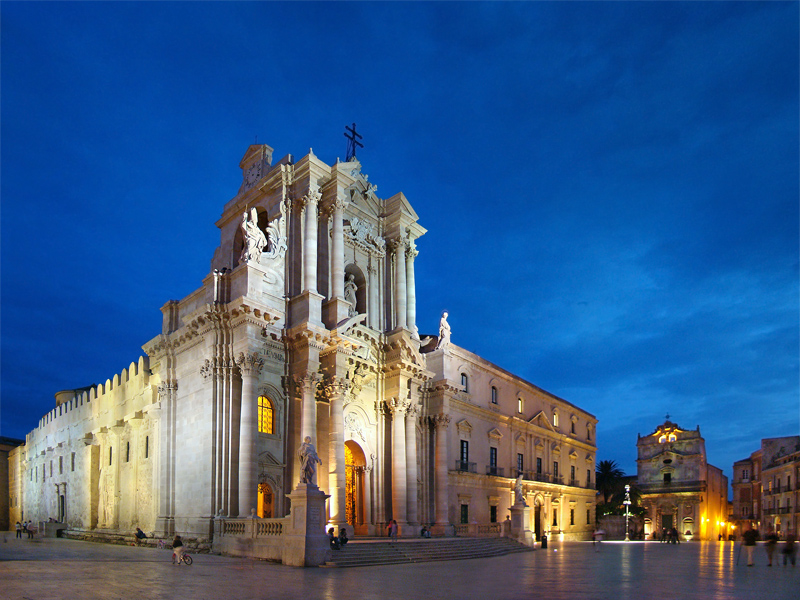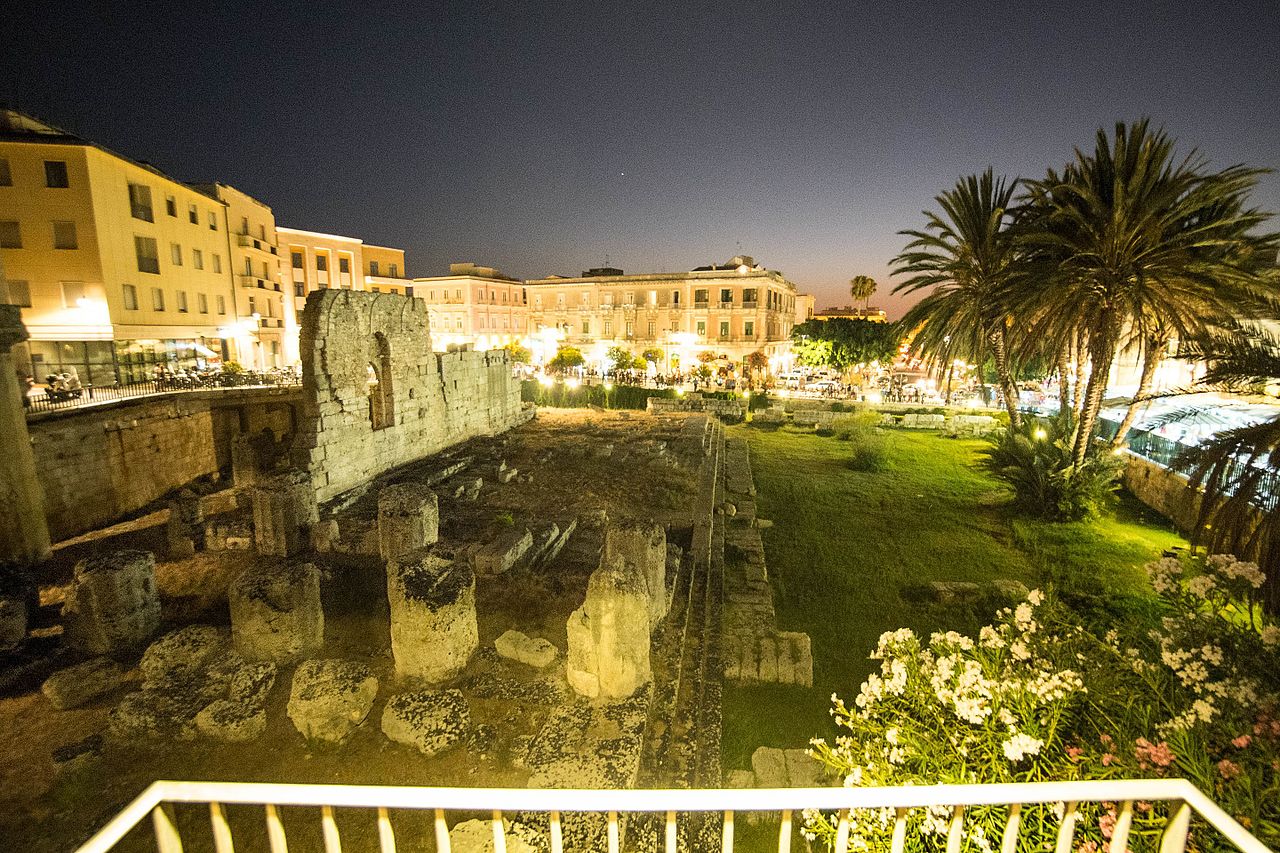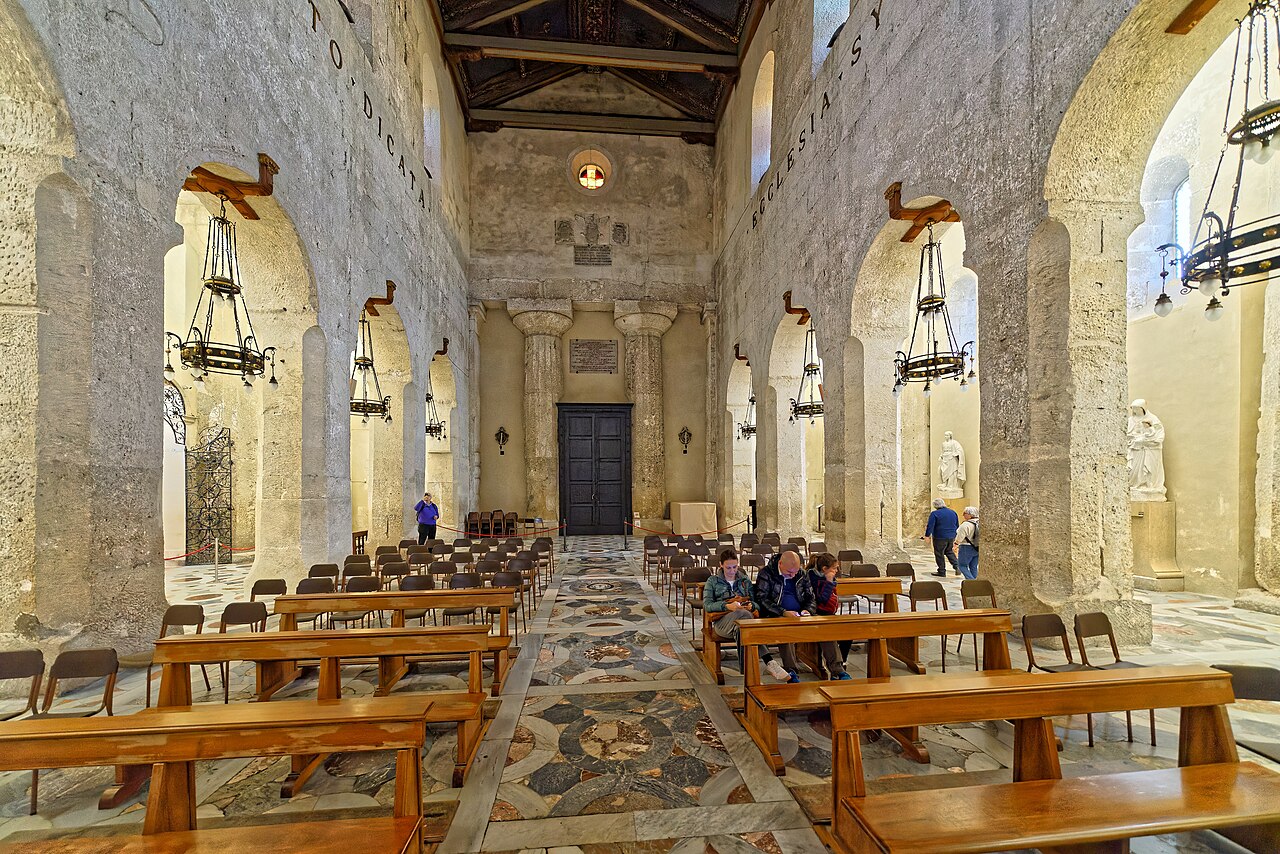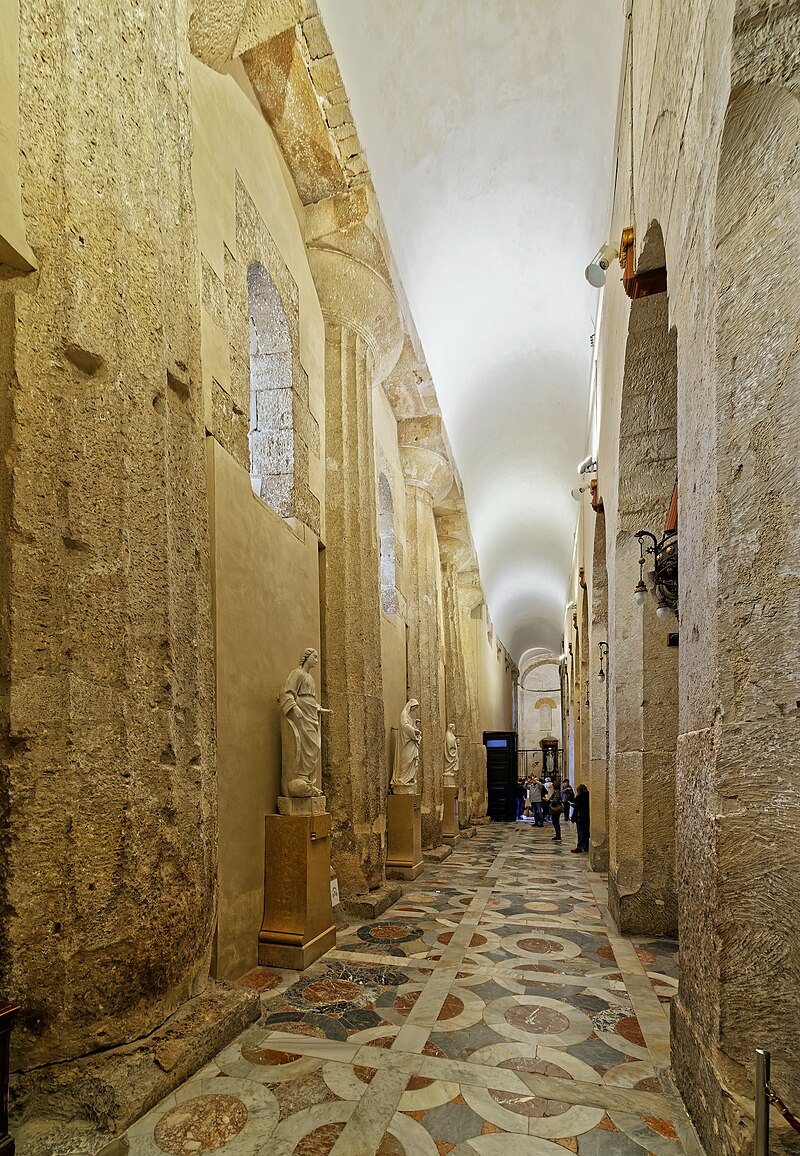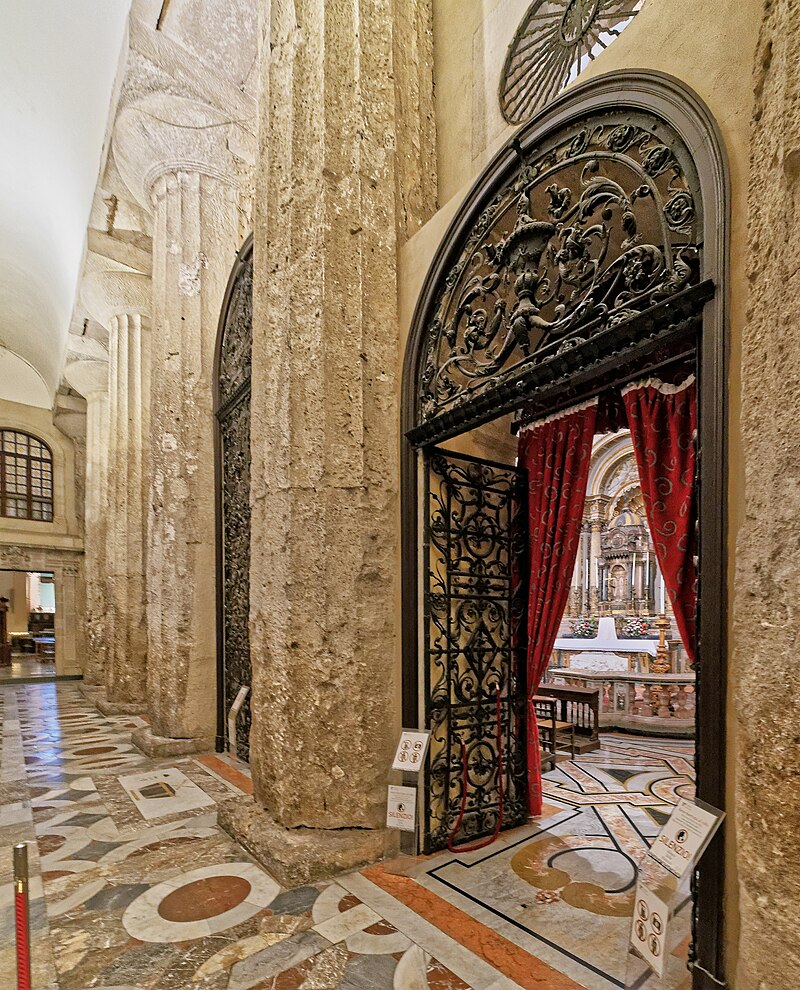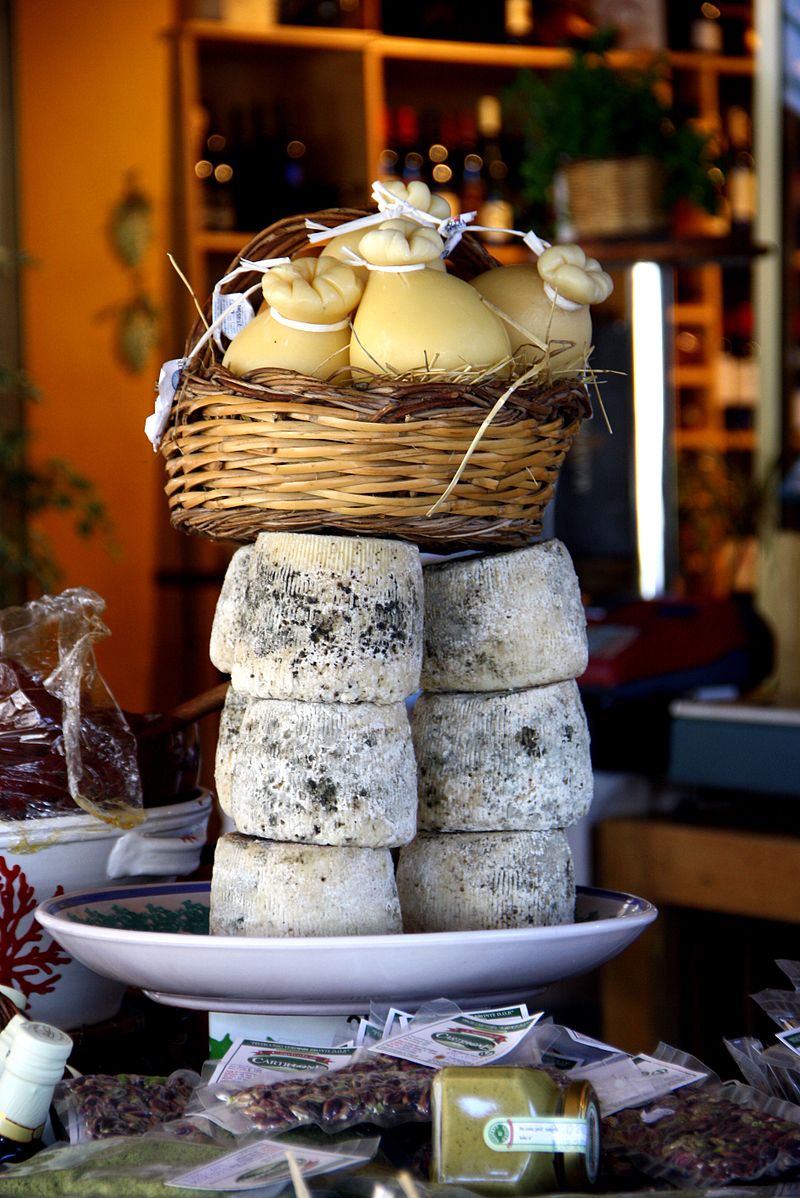
ORTIGIA
THE ANCIENT DISTRICT OF SYRACUSE

The Explore Ortigia, the ancient district of Syracuse
Ortigia is reasonably compact and easy to explore. Ortiga is contained on an island connected to mainland Syracuse by two bridges. This is the part of Syracuse that will take up most of your time though there are some excellent Roman and other historical sights in the rest of Syracuse
This part of the town includes a great deal of important baroque architecture constructed during the 17th and 18th centuries, and various other places of interest.
The Piazzo del Duomo is the central point of the city, and here you will find Syracuse Cathedral (duomo), the most important monument in Ortigia. Syracuse cathedral was built in the 7th century on the remains of a 5th century Greek doric temple, the Temple of Athena. Columns from the original temple can still be seen both inside the cathedral and on the outside.
The impressive Baroque facade that faces onto the Piazza Duomo (Cathedral Square) was added in the 18th century following a huge earthquake in 1693.
Piazza Duomo is one of the most beautiful squares in the whole of Italy. It is a masterpiece of Baroque architecture and around its edges are a number of beautiful Baroque palazzos (palaces). Opposite the cathedral is the impressive Palazzo Beneventano del Bosco with an 18th century facade though the palace has medieval origins.
The Palazzo Municipale was built in 1629 by a Spanish architect, Juan Vermexio. He was nicknamed ‘the lizard’ and if you look at the left corner of the cornice you can see his signature carving of a lizard!
The beautiful Palazzo Arcivescovile is now home to the Alagoniana library which you can visit to see some rare 13th century manuscripts. At the southern end of the square is the church of Saint Lucy to the Abbey, the Chiesa di Santa Lucia alla Badia. This is home to Caravaggio’s painting of the burial of Saint Lucy (Il seppellimento di santa Lucia), considered to be one of his masterpieces.
Piazza Duomo is surrounded by cafes and restaurants and is an excellent place to stop for a drink or a beer and enjoy the beauty of the square. Near to the church of Saint Lucy is a building which was transformed into a bar for a days filming whilst we were there – perhaps Inspector Montalbano which is filmed in Sicily!
Underneath the Piazza Duomo are a set of tunnels which were used to escape the bombing during the Second World War. Times for visits are listed on the entrance door.

Spreading out from the Piazza Duomo there is still much to see. Indeed just wandering around the charming narrow streets and discovering churches and palaces and beautiful architectural details throughout the whole of Ortigia island is such a pleasure.
The Piazza Archimede to the north of Piazza Duomo is a pretty square with a beautiful fountain depicting the Nymph Aretusa who was transformed into a river by the goddess Artemis (Diana) to escape the attentions of Alpheus. This was not a total success as he too transformed into a river in order to ‘mingle’!
The Nymph Aretusa is celebrated again at the popular Fonte Aretusa on the west of Ortigia. The Fonte Aretusa is a fresh water spring that has been made into an attractive pond planted with papyrus and inhabited by a family of white ducks. There is a statue of Aretusa next to the pond. The Fonte Aretusa is surrouned by high walls and from these you have lovely views over the spring below and the sea on the far side of the pond. It is a popular spot for people to meet or pause as they walk around the outer perimeter of the town.
To the south of Piazza Duomo is the Palazzo Bellomo which is home to Syracuse’s art gallery, the Galleria Regionale di Palazzo Bellomo, and contains works dating from the Byzantine to the 18th century with the highlight being the Annunciation by Antonello da Messina.
Near to here are the Jewish baths which were blocked up and hidden when the Jewish population were thrown out of the city in the 15th century. The baths fill with fresh spring water which arrives in narrow chanels created to fill the baths. They can be visited from the hotel ‘Alla Giudecca’ with a guide from the hotel. The baths are nine meters below ground and very atmospheric.
At the northern end of Ortigia near to the bridges you cross to enter the island you can also see the oldest Doric temple to be found anywhere in Sicily at the Temple of Apollo. Also near to here is the lively daily market; the Mercato di Ortigia.
At the tip of the island at the opposite end to the bridges and the Temple of Apollo is the imposing Castle Maniace built in the 13th century. The castle was built on the orders of Frederick II and is named after a General Maniakes who commanded an earlier fort on the same site.
The castle is open to visitors in the morning and has a huge hall with a beautiful arched ceiling which is impressive and an ‘Antiquarium’ with various exhibits including copies of two bronze rams that once stood here. The originals are now in the archeological museum of Palermo.
Also to see in Ortigia is the Museo Leonardo de Vinci and Archimedes. This celebrates the life and works of both men and as Archimedes lived and died in Syracuse it is interesting to learn more of his inventions whilst here.
It is possible to walk right round the outer edges of the island with the sea to one side and the beautiful buildings of Ortigia to the other. This is a very nice walk to do and there are various churches and museums to see as you wander round. The entrance to the walkway on the western side is through the Porta Marina, one of the ancient gateways to the city that still remain. Another is the Porta urbica which is nearby on Via XX Settembre.
ORTIGIA ARE ROMANTIC QUIET CORNERS, HISTORIC PALACES, SQUARES FULL OF LIFE AND GARDENS FULL OF COLOUR.


A PICTORIAL GUIDE TO PLACES YOU SHOULDN’T MISS
PLEASE SEE BELOW IN THE GALLERY ALWAYS WITH THE TITLE AT THE BEGINNING. BUT THERE ARE MANY PALACES IN TOWN WITH PERMANENT EXPOSURES AND MANY MORE PLACES THAT ARE DEFINITELY WORTH A VISIT.








